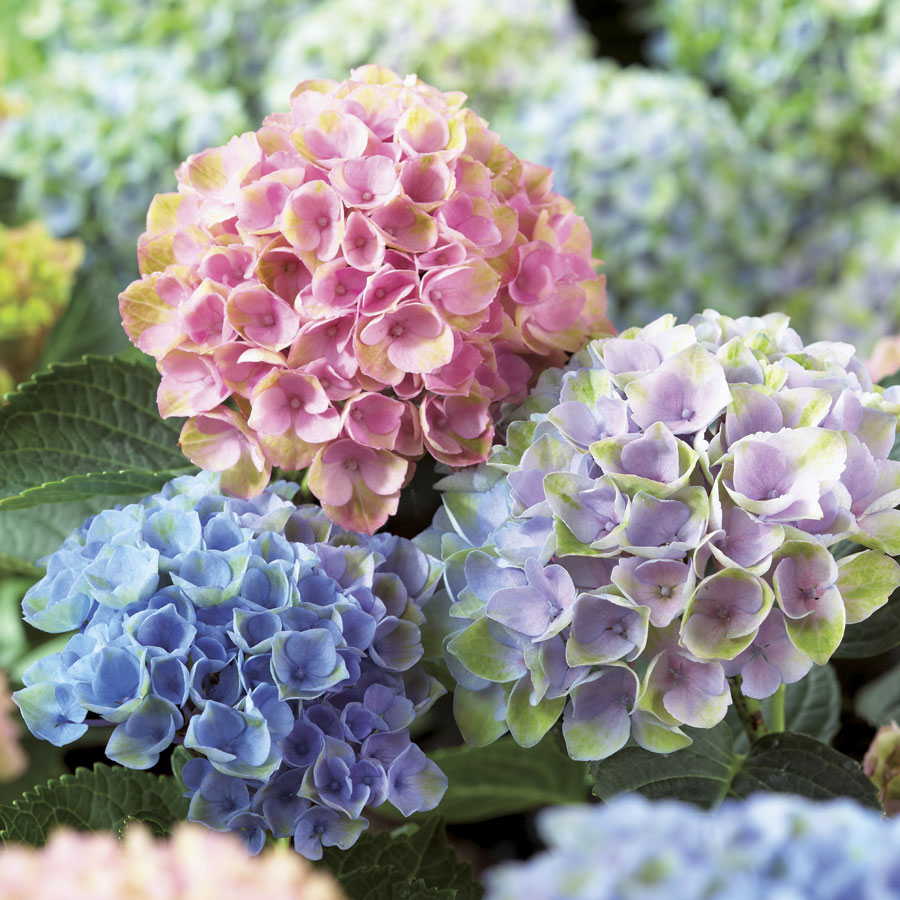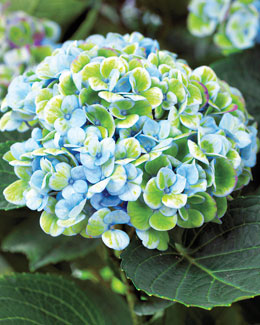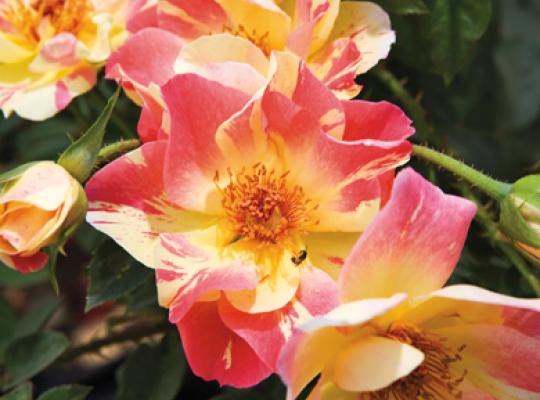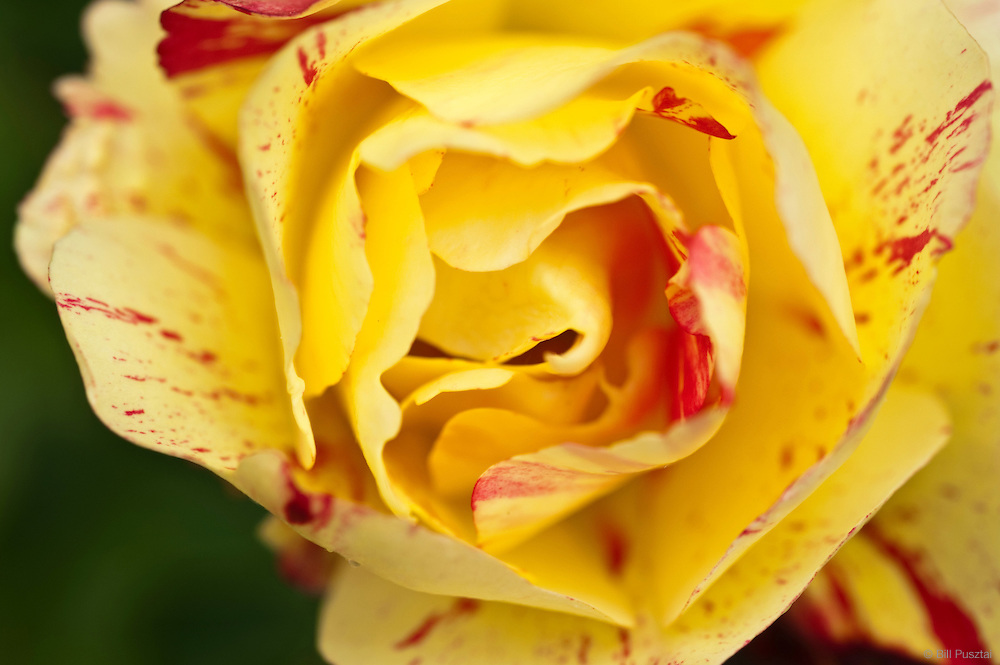Try these plants in your garden - you will be rewarded with long-lasting and beautiful flowers. And we all know there can never be enough flowers!

Hydrangea macrophylla Everlasting Revolution - Many different colors of blooms on the same plant

Hydrangea Everlasting Revolution with green tinge as blooms ageThe plant grows to about 3 ft X 3 ft with sturdy stems and deeply-toothed leaves Hydrangea macrophylla Cultivar name: 'Hokomarevo'. The color changes on a single Revolution shrub are incredible. You will see combinations of deep pink, maroon and blue blooms, all with green highlights as the flowers mature. Every color can be present at once on this heavily re-blooming shrub. It's as if all the colors and combinations possible in the Hydrangea family have come together in a single shrub.
"Everlasting™" is a Dutch series, and it was originally bred for the cut-flower market, so the emphasis is entirely on the blooms. The flower stems are stronger and straighter than those of many other Hydrangeas, ensuring that the blooms won't flop or twist. The flowers are ultra long-lasting and quite large, especially when seen on the plant, which is just 3 to 4 feet high and wide.
It needs consistently moist soil and a bit of shade. Do not allow it to dry out completely, but make sure the soil drainage is good. Zones 5-9.

Rosa X 'Citrus Burst'

Rosa X 'Citrus Burst'
This climbing rose has flowers with soft pink and yellow stripes that repeat steadily all summer. It has a light green apple fragrance and a vigorious grower, reaching up to 12 feet. It has excellent disease resistance and with dark green, very glossy foliage. Bloom Season: spring to fall.


Clematis Still Waters
Clematis Still Waters™ - "Dependable performance and soothing lavender tones." Cultivar Name: 'Zostiwa'.
Still Waters™ produces pale lavender-blue 4-inch blooms with maroon centers. It starts blooming in June and flowers freely, reblooming all summer. The pale blooms hold their color beautifully - a long-lasting play of light against warmer colors. It is a Group 3 Clematis, meaning that it blooms primarily on new wood (making it "easy" to grow because you can cut it back each year). Every spring you should prune it back to about 2 feet from the ground.
Bred in the Netherlands, Still Waters™ is a Proven Winners® ColorChoice® plant chosen for its exceptional beauty and performance. To be selected for this group, it was thoroughly tested in trial gardens all around the world, and found to have superb health, vigor, and color.
You commonly read that Clematis prefer light shade, especially on their roots. But I've also learned from experts that this "preference" is because many people don't plant Clematis correctly. Just like tomato plants, they should be planted with their crowns 2 – 3 inches deeper in the ground compared to the pot-dirt-level to encourage robust root growth. The first set of true leaves should be under the soil surface. This allows the plant to grow a strong root system – critical for a vigorous vine.
I know, I know. This goes against everything we’ve ever heard about “don’t plant too deeply or you’ll kill the plant.” Tomatoes and Clematis break that rule. They sprout roots from nodes along the buried stem, and these extra roots strengthen the plants so that they can support more fruit (tomato) or climb more vigorously and produce more flowers (clematis). With proper planting, watering until establishment (and during periods of drought) and mulch to conserve soil moisture, Clematis should do just fine without "cool" or "shaded" roots. Remember to keep the mulch several inches away from the crown, where the vines emerge from the soil.
Old habits die hard, but I've tried it a number of times and it really does work work. Clematis is "finnicky" no longer! You can get Clematis Still Waters™ and a great selection of other Clematis and other types of vines and climbers mail-order from Brushwood Nursery. They propagate from cuttings, and ship again starting Sept through Nov (although last I checked they are out of stock for Still Waters™). I've been very pleased with their quality and I've tried small-flowered Clematis and non-vining Clematis varieties as well – both turn out to be unusual and beautiful (and low-maintenance as well). It’s a cheap and easy way to add flowers to your landscape, especially if you have trellises, gazebos, garden arches or stone walls for the vines to grow on.
Zones 5 to 9.